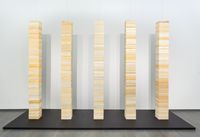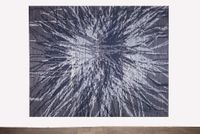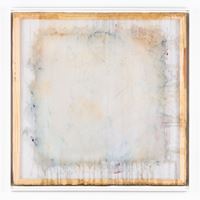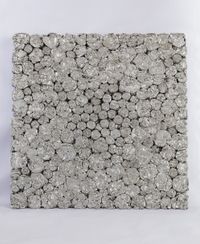Using material that was both modest and quintessentially Indian, like jute and newspaper, Nai’s pieces were and are studies in tedious complexities that, once completed, are presented as a tightly organised unit.
The media that Nai uses are usually cheap and ubiquitous, alluding to both hierarchies of artistic media and Indian social structures. Jute, for instance, is a strong vegetable fibre, often woven into a durable fabric similar to burlap that was once used as clothing material for the poor, and is now used more commonly in building construction. Nai hails from a family of jute traders, and his intimate understanding of the material comes equally from a cultural and familial relationship to it.
His use of newspapers examines the tremendous diversity and contention within Indian society: there are almost 100 newspapers in 19 different languages distributed daily in India. Nai soaks these, stripping them of their words, and com-presses them in wooden moulds, elevating these items from disposable to the rarified.
Born 1980 in Gujarat, India, Manish Nai attained a Diploma in Drawing and Painting from the L.S. Raheja School of Art in Mumbai. In 2014, Nai was selected for the Kochi-Muziris Biennale.
Text courtesy Kavi Gupta.







